Last week the Monash Freeway was closed for hours thanks to a crash between two massive trucks and four cars, that thankfully resulted in no serious injuries. But for me the interesting part was the truck stuck in the middle of the pile-up – a massive A-double truck operated by Cleanaway.
A crash involving two trucks and four cars has closed part of Melbourne's Monash Freeway this morning.
But incredibly, police say no-one was seriously hurt.
Three people have been taken to hospital, two with minor injuries and the third is in a stable condition. pic.twitter.com/cs8h2x7FXJ
— News Breakfast (@BreakfastNews) July 24, 2019
Cleanaway started operating their fleet of massive A-Double trucks from May 2017, following the opening of the South East Melbourne Transfer Station in Dandenong.
The facility acts as a consolidation point for rubbish collected from residential and commercial customers in the south-eastern suburbs of Melbourne, where it is compressed into semi-trailers.
Then trucked 60 kilometres across Melbourne.
Eventually ending up at Ravenhall, where it is dumped into the Melbourne Regional Landfill.
On opening the South East Melbourne transfer station accepted a total of 580,000 tonnes of waste per annum, and has EPA approval to increase to a peak of 650,000 tonnes by 2029.
Assuming 286 operational weekdays per year, this means 2028 tonnes of rubbish needs to be moved per day – increasing to 2273 tonnes per day once the transfer station reaches design capacity.
Transported by A-double vehicles with an average load of 43 tonnes per truck, this give as weekday average of 47 trucks per day, increasing to 53 trucks per day at the peak – or six trucks per hour!
No wonder pedestrians avoid the road to Caroline Springs station like the plague.
A short history of these ‘monster’ trucks
Back in 2009 VicRoads commenced a two year trial of bigger ‘High Productivity Freight Vehicles’ serving the Port of Melbourne.
But with plans to introduce them elsewhere:
The use of next generation High Productivity Freight Vehicles (HPFVs) on key dedicated routes has the potential to reduce the number of trucks by almost a third, and reduce emissions and the cost of travel by up to 22 per cent on these routes.
With Victoria’s freight task forecast to approximately double by 2030, next generation HPFVs will be an important way to mitigate increasing congestion, emissions and the cost of our goods.
The trial of next generation HPFVs is an important step in the implementation of a Performance-Based Standards approach to heavy vehicle regulation in Victoria and the broader introduction of new, safe and efficient freight vehicles.
In 2013 the number of roads available to these massive trucks was expanded, following the adoption of the ‘Moving More with Less’ plan, and the types of trucks expanded to include 30-metre long A-doubles in 2017 thanks to the Performance Based Standard (PBS) scheme for trailers.
But is there another way?
Travelling from the Cleanaway transfer station at Dandenong South to the tip at Ravenhall is a 60 kilometre long trip across Melbourne, that takes around an hour via the Monash Freeway, CityLink, West Gate Bridge, Western Ring Road, and Deer Park Bypass.
But the Boral quarry next door to the Ravenhall tip already has a railway siding.
Which branches off the Ballarat line at Caroline Springs station.
With just a 1.3 kilometre drive between it and the tip.
The South East Melbourne Transfer Station is also near a rail siding.
Located on the Cranbourne line at Lyndhurst.
It may be a 7 kilometre long drive across Dandenong South.
But the siding is the site of a future inland port:
Salta’s Lyndhurst terminal is located near Dandenong
• 50,000 m/3 warehouse constructed for Bunnings
• Terminal yet to be constructed
• PRS shuttle trains would use:
• Broad gauge Pakenham & Cranbourne suburban rail lines
• Broad gauge V/Line & ARTC lines between Southern Cross and the Port
So why wasn’t the South East Melbourne Transfer Station built at the Lyndhurst intermodal terminal, with rubbish loaded into containers then transferred by train across Melbourne to Ravenhall, then trucked the last leg of the journey to the tip face?
Sydney proves it works
In 2004 Sydney ran out of space to bury their rubbish, so the Woodlawn open-cut mine near Goulburn was converted into a rubbish tip. Rubbish is loaded at the Clyde transfer station in western Sydney, but instead of a fleet of trucks, it is loaded onto a train.
Each week six 55-carriage trains make the 250-kilometre journey, carrying 1200 tonnes of rubbish each time.
And back to Melbourne
Think moving bulk freight across Melbourne by rail won’t work?
Well, every weekday 1500 tonnes worth of worth of gravel roll through Flinders Street, loaded at a quarry in Kilmore East and bound for Westall.
As does 2000 tonnes of containers headed from Gippsland to the Port of Melbourne.
And 3000 tonnes of coil steel, headed for Hastings.
All three trains have been running since the 1970s – which proves that if there is a will to get freight onto rail, there is a way.
Sources
Melbourne Regional Landfill – Ravenhall.
- A new era in Melbourne’s south east as Cleanaway opens SEMTS (May 5, 2017)
- Traffic and Transport Assessment for the Melbourne Regional Landfill – Ravenhall (14 September 2016)
Bigger trucks.
- Monash Freeway reopens after multi-vehicle smash at peak hour, herald Sun (July 25, 2019)
- Victorian high productivity vehicles, Advantia Transport Consulting
- Victoria’s new HPFV networks for 30-metre A-doubles, Advantia Transport Consulting
- HPFVs – Moving more with less, VicRoads
- Performance Based Standards, joint report by the NHVR and ARTSA (2019 Edition)
- PBS Vehicle Configurations, National Heavy Vehicle Regulator
- Port Rail Shuttle Project Outline
Rubbish trains in Sydney.
- A complete space of waste, Sydney Morning Herald (August 2, 2004)
- Woodlawn Bioreactor, Veolia
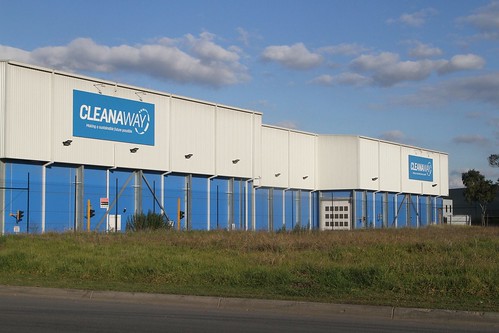
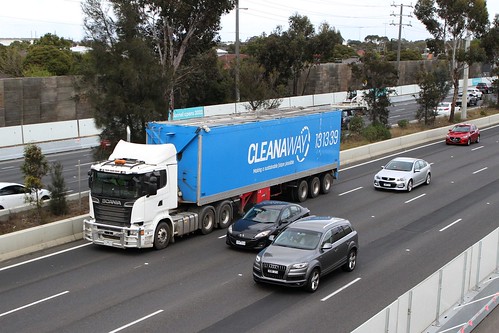
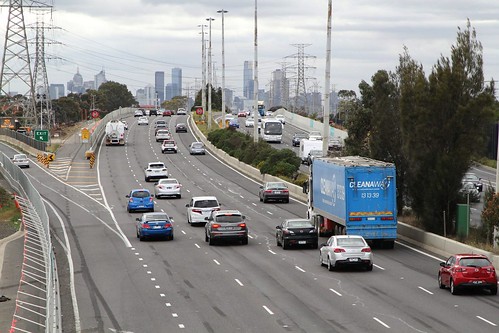
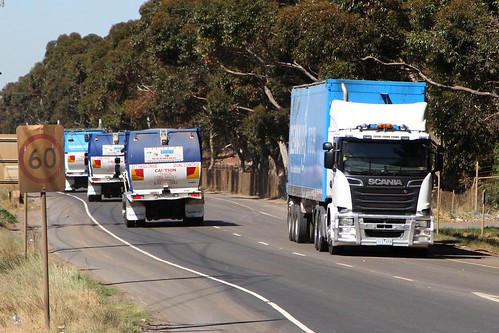
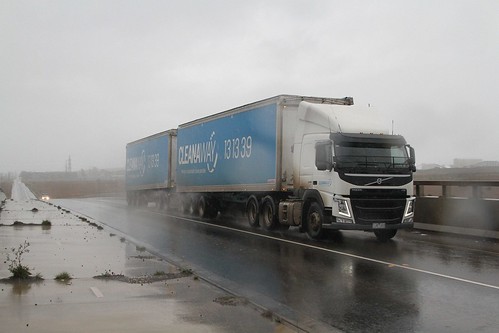
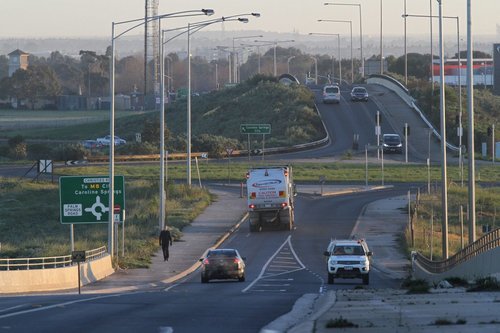
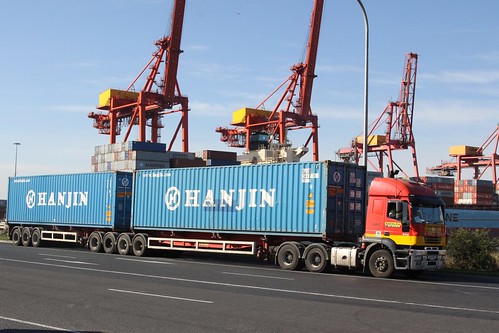
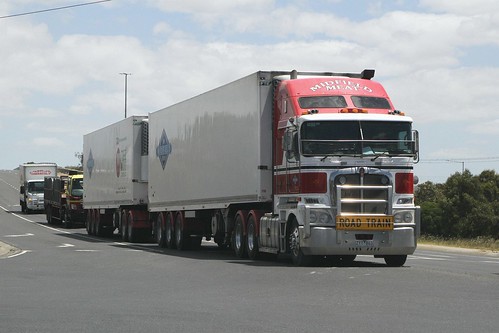
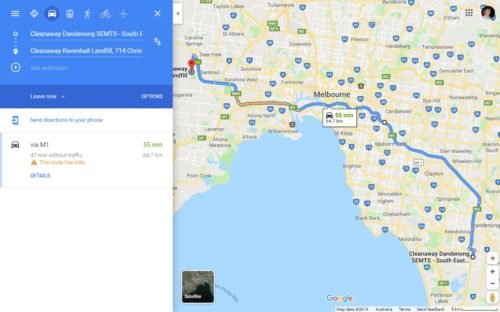
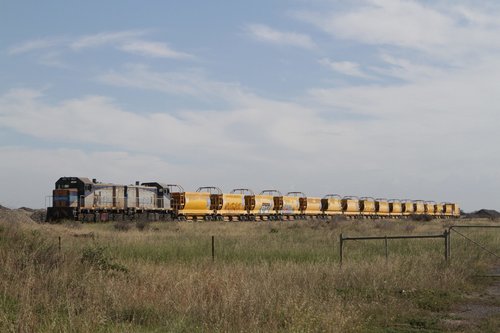
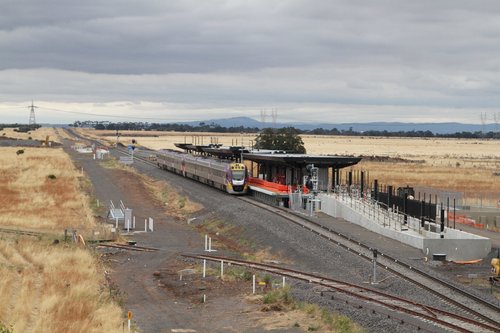
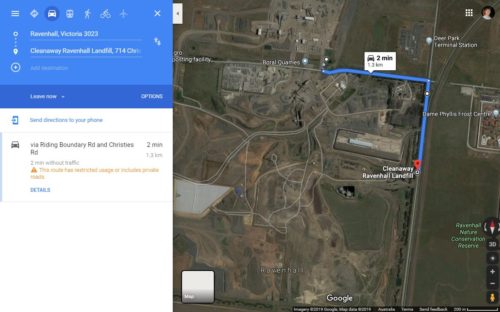
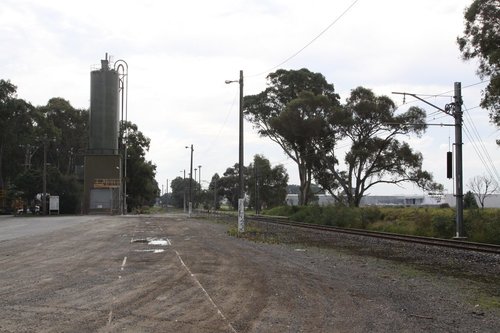
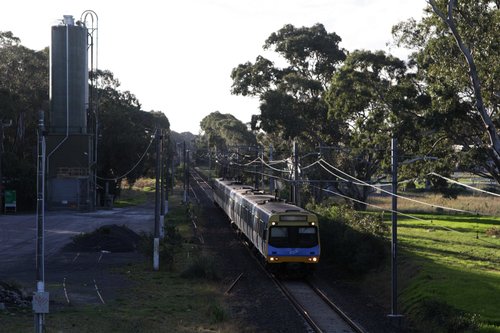
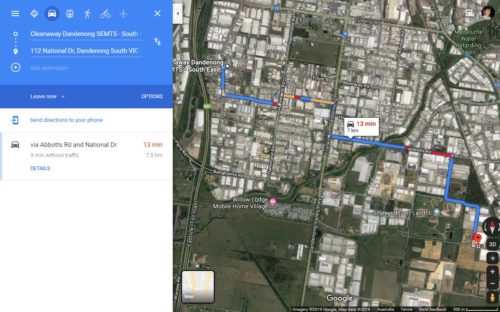
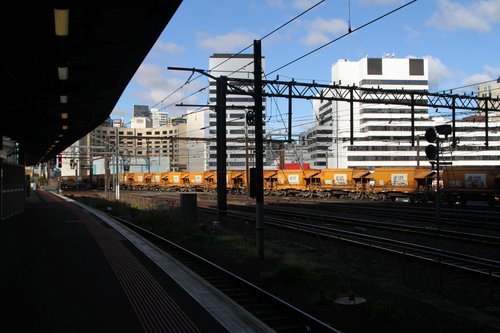
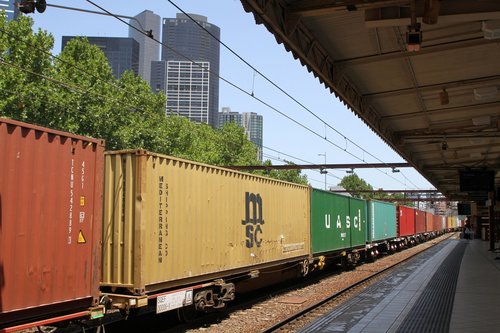
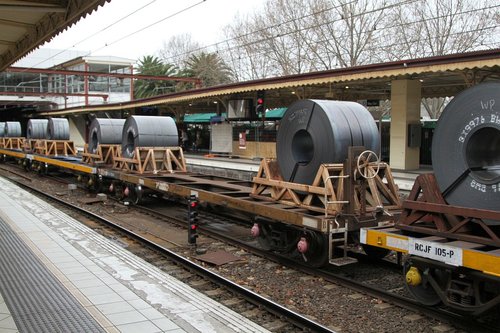

Unfortunately, there is little incentive to replace trucks with trains in Victoria. In fact, it is the opposite.
The Mildura rail line stuff up would not happen for roads. Now we have trains taking a huge amount of time to get to and from Mildura, with increased crew costs for the rail companies.
It is obvious that there is no future for freight trains (or V/Line passenger trains) on the tracks to the east of Melbourne. The track layout and signalling that is being introduced for the new suburban trains is in no way designed to encourage anything but suburban trains. The fact that skyrail was built with only two tracks instead of four bears testimony to freight rail not being welcome.
NSW leads the way with rubbish trains operating quite successfully and rigorous enforcement of commercial road vehicles at weighbridges. Victoria turns a blind eye to road vehicle enforcement, just taking cheap revenue from speed cameras. Has anyone seen a Vicroads weighbridge in operation in the last five years?
There is the Mode Shift Incentive Scheme (MSIS) that aims to get containers away from trucks – but only applies to six rail services already running, and there isn’t anything to encourage new routes.
https://wongm.com/2015/09/subsidising-rail-freight-victoria/
As for NSW’s approach to checking road vehicles, the Marulan weighbridges on the Hume sure are impressive:
https://www.ownerdriver.com.au/industry-news/1611/nsw-reveals-safety-station-secrets
When was the last time VicRoads opened any of their weighbridges in Victoria?
The rail industry hasn’t exactly bent over backwards to help companies like Cleanaway to move to rail.
The first hurdle they face is the regulatory framework, which is so complicated that no company in another industry (which sees transport as a means to an end) would ever be able to justify the investment in dollars, people and boardroom attention to get to the point where they could run their own trains. Even a dedicated transport company like SCT has to really believe in it (and have its own land speculation business) to be able to get off the ground.
And if they try to contract the job out to an existing operator, they have a choice of Pacific National, who don’t care about anything that isn’t coal or interstate container traffic, or one of the small operators who don’t have the cash to buy peak time paths so they won’t be able to move the freight at the time Cleanaway want it moved.
The second hurdle is the cost. Building a hardstand for loading freight into trucks is a known thing and plenty of building contractors can do it. But building a siding for loading trains means getting permission from Victrack, complying with a bunch of standards that aren’t exactly in every builder’s top drawer, putting in signalling and interfacing with ARTC’s control centre in Adelaide, and spending millions of hours dealing with a massive bureaucracy which is extremely risk averse and sees new operators as a big risk.
Then there’s the cost of rollingstock. An operator can choose to hire it or buy it, but either way they have to pay for a hundred million dollar loco instead of a quarter million dollar truck, and there’s a similar difference with wagons and trailers. Even the premium they’d have to pay for A-doubles being a fairly new and experimental concept won’t make the cost comparable to rail vehicles.
The third hurdle is the horrible condition of our track. It cuts down transit speed which means lower productivity. Plus Metro hate having their trains delayed by a freight that’s doing 5km/h across the points from the main line into Lyndhurst siding. The extra wear and tear on the rollingstock doesn’t help the economics of the project either.
The only way we’ll ever see freight moving from road to rail is with some massive investment, bureaucratic reform, and quite a number of brave pioneers who are willing to sacrifice their short term profitability and make things happen.
Salta Properties had been betting on the Port Rail Link project, but gave up on the Lyndhurst terminal in 2018 because of government inaction:
http://www.heraldsun.com.au/news/victoria/salta-properties-shocks-transport-industry-by-withdrawing-from-port-rail-shuttle-process/news-story/7a3cf5708c3751275bf5b96750d46b49?nk=8969fa8c17b80bc3d40444093ad2c56a-1527489561
Yeah, funny that Google then cut/paste “research” missed that
a) the Lyndhurst siding’s closer than you think but
b) Even with 2 sidings going in, goods trains won’t have the paths in the near future ex DNG even with moving block.
That’s based on actual events, but hey…
The current sidings at Lyndhurst are:
– secured by Annett key, which means you’re blocking the world to get a train in,
– only ~350 metres long, which is nowhere near enough for the trains you would need to run, and
– right up against the main line and surrounded by trees, so nowhere to build a hardstand.
The South East Melbourne Transfer Station was built from scratch in 2017 – if you built it to be rail served it would be beside a new rail siding, so reachstackers could move containers direct from rubbish compactor to the train.
Peak and sholder peak won’t work, but the Westall and Maryvale freights currently fit between the hourly V/Line services and a 10 minute suburban service – plus there is always evenings, assuming no trackwork.
They keep making the claim that “the road freight task will double by 2030” all over the place.
Maybe the population will rise 15%, so that’s part of it, right there. Where’s the rest coming from ? More food ? More cars ? More junk for our houses ?
It might be more exports. But the “double by 2030” is often claimed for thinks like road freight from Melbourne to Brisbane. How many exports get sent that way ?
A move towards ‘just in time’ logistics where more frequent but smaller deliveries are made to anywhere and everywhere, plus the growth in online shopping orders?
Freight keeps increasing because people consume more than they used to. And an increase in population will cause a disproportionate increase in freight initially, as their houses are built. After that, there should be less freight for them to actually live, but the construction takes a lot of movement of stuff.
And road freight is the easiest way to move things, partly due to the reasons very well explained above by Michael Angelico.
And PBS trucks are much safer than the alternative conventional trucks, so you will see many more of these 30 m A-doubles on roads that can accommodate them. They are especially suited to specific tasks where their payload can be anticipated.
It’s interesting how PBS trucks are considered ‘safer’:
http://www.truck.net.au/advocacy/submissions/effectiveness-pbs-scheme
When the extra features such as underrun protection and upgraded braking system could easily be applied to ‘conventional’ trucks.
A look at how A-doubles ended up being made ‘safe’ for urban areas is here:
http://www.primemovermag.com.au/featured/article/can-the-a-double-change-the-trucking-industry
And how they have taken over Australian roads:
http://www.trailermag.com.au/news/article/a-double-a-pbs-success-story
[…] Sounds like a familiar story. […]
[…] And the only footpath out of there filled with a fleet of rubbish trucks. […]
[…] skirt the massive rubbish tip located at Boral’s quarry in […]
[…] the garbage train which transports Sydney’s waste to a giant landfill outside […]